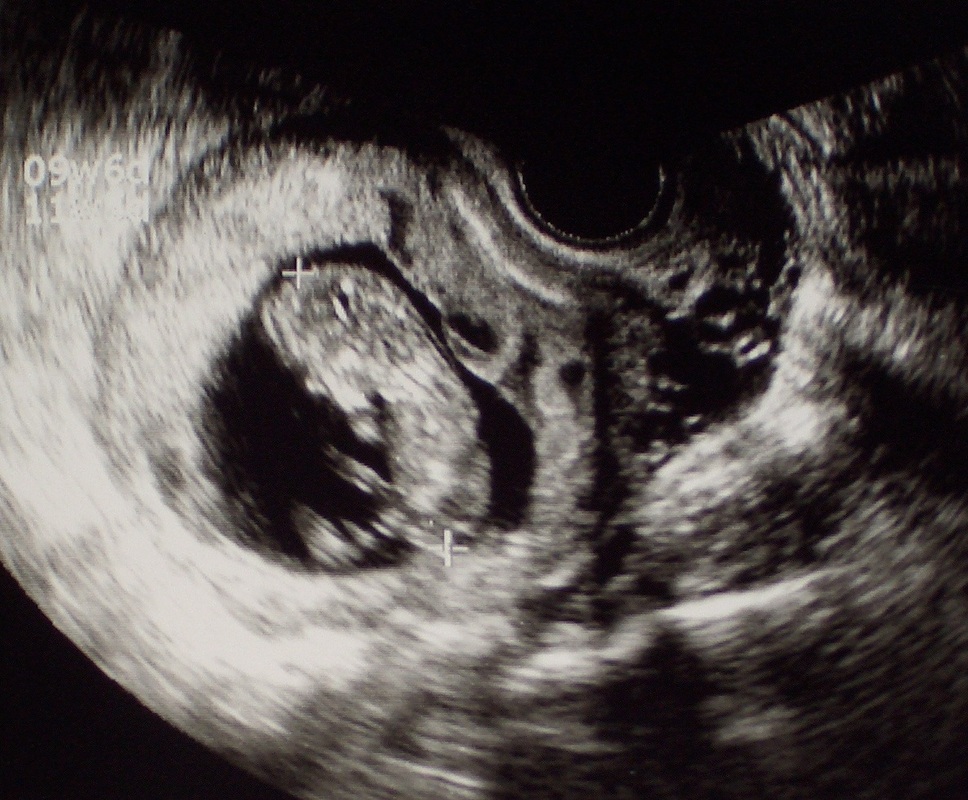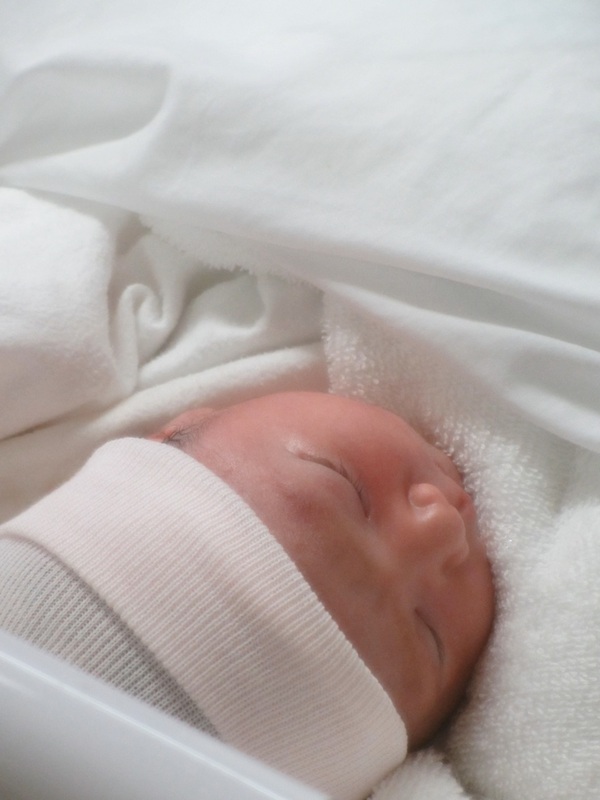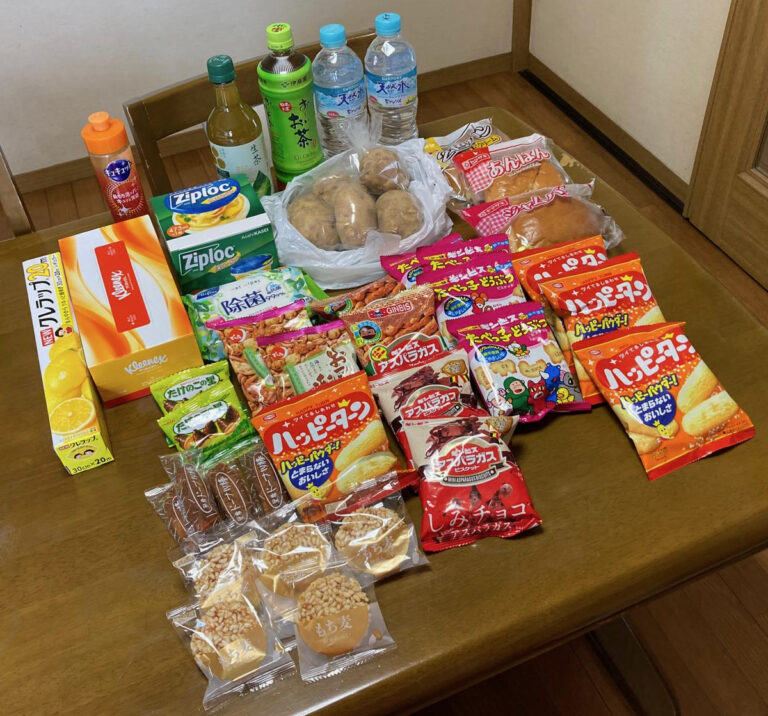Mrs M is pregnant!
Actually she’s been pregnant since late last year, but I’ve waited until well past the antei-ki (安定期 / literally ‘stability time’ – ie. the point at which it’s OK to tell your friends, relatives and readers) before writing a blog post about it.
Surprisingly enough – and in the first of what will no doubt be numerous differences between the British and Japanese experience of child rearing – while I would describe Mrs M as beings six months pregnant, she would describe herself as being seven months. When I first found out that Japanese babies wait for ten months before entering the world, I thought that I was dealing with a fundamental biological discrepancy, but no, when it comes to measuring one’s term, the Japanese use lunar months of 28 days, as opposed to calendar months of between 28 and 31. Confusing, yes, but logical too when you consider body clocks, menstrual cycles and so on.
By the time our little one is born, I will have fulfilled my ambition to delay becoming a father until my fifth decade, and the first time we went to our GP for advice was more than two years ago, in early 2010.
‘You’re both fit and healthy,’ he said, ‘so there’s no need to start running tests. Think of it this way: you’ve got twelve goes between now and next spring, so I’m sure you’ll come back to me with good news before then.’
Twelve goes later nothing had happened, although the GP in question was none the wiser, as by that point we had moved to Japan. Rather than a GP, when you need medical treatment here you go straight to a specialist, so once we had settled in, we registered with the nearest sanfujinka (産婦人科 / maternity-gynaecology clinic). All four doctors at the clinic – mum, dad and their two daughters – are members of the same family, and dad – let’s call him I-sensei – was the first one we met.
‘Do you understand Japanese?’ he asked me.
‘By and large,’ I said, ‘although I’m not very good when it comes to accents and dialects. I prefer “NHK Japanese”, if you see what I mean.’
‘Did you hear that?’ said I-sensei to one of the nurses as he went through to the next room. ‘I speak standard Japanese!’
One Saturday last summer he gave a lecture at the clinic about the science-y side of conception and pregnancy, and the various treatments on offer should they be necessary. The most reassuring fact of the day was that the average man is capable of fathering a child until he is seventy-five years old (I almost punched the air and shouted ‘Get in!’ when I heard this), but according to I-sensei, while my tadpoles were both energetic and longevitous, they were emerging in comparatively small numbers – the average school, so to speak, has 50 million members, whereas mine were in the 10 million range. In order to counteract this shortfall, he suggested that we move on to The Next Stage: jinko-jusei (人工授精 / artificial insemination, which for the sake of brevity I’ll refer to as AI). This meant a lot more trips to the clinic for Mrs M, as there were injections to receive, prescriptions to pick up, and the AI process itself, which without going into too much detail, involved my tadpoles getting some assistance on their journey to meet Mrs M’s egg – a bit like being given a lift to work rather than having to walk all the way there, if you see what I mean.
After two months of AI and still no result, I-sensei said that it might be time for The Next Next Stage, so as well as my tadpoles getting a lift to work, Mrs M underwent an additional series of injections – one a day for ten days, to be exact, and a process that was, quite literally, a pain in the backside – to enable her to produce multiple eggs simultaneously (this is standard practice with fertility treatment, and increases your chances of having twins to one in five, as opposed to the usual one in a hundred or so). He also referred me to a nearby hinyoh-ka (泌尿科 / urology clinic) for a more thorough check on my tadpoles.
This was, it has to be said, one of the less dignified episodes in my life so far, and took place on the eighth floor of a rather run-down office building (the clinic was on the verge of moving to new, purpose-built premises nearby). After taking my blood pressure, the head nurse – a middle-aged woman with a tobacco-tinged voice and a no-nonsense manner, no doubt developed over many years of dealing with sheepishly embarrassed men like me – said that she needed a sample of my shoh-sui.
‘Shoh-sui?’ I said.
‘She means pee,’ explained Mrs M (a polite euphemism, the literal translation of shoh-sui / 小水 is ‘small water’).
This required filling a paper cup to about the halfway mark, in a toilet that was directly off the reception-area-stroke-waiting-room, and which had a door that was rather tricky to lock: although it didn’t happen while we were there, countless patients must have suffered the misfortune of having someone walk in on them in mid-small water.
Once the nurse had taken some blood to be sent away for analysis, it was time for the most important sample of the three. For this I was given another paper cup, and led downstairs to a little room with a sofa, a TV and a selection of magazines and DVDs (thankfully, the door lock here was more secure and easier to operate than the one on the toilet).
In yet another room – this time with a bed and some machines that looked very much as if they might go ‘ping’ if you pressed the right button – the nurse taped two sensors to what are referred to in Japanese as one’s kintama (金玉 / golden balls). This was to make sure they were functioning at the appropriate temperature, so I lay down for a few minutes watching the figures on a digital readout waver by fractions of a degree, and then stood by the bed for a few more minutes doing the same thing. The tricky part came when the test was over, and I was left in the room to remove the sensors: particularly when it’s adhered to one’s nether regions, surgical tape isn’t ripped off in a single swift and momentarily uncomfortable motion, but rather in a series of protracted and agonisingly painful ones.
Mrs M and I were then admitted to the urologist K-sensei’s office, where he produced a garland-like string of different sized yellow plastic eggs. These are for assessing the relative dimensions of a patient’s kintama, and reminded me of the set of different sized rings Mrs M used in her previous job at a jewellery shop.
‘This may feel a little cold,’ said the nurse as she then applied some gel to my lower abdomen and kintama, in readiness for an ultrasound scan. For minimum patient discomfort, the gel had been warmed up in advance, although the unexpectedness of this was probably more disconcerting than if it had been cold in the first place.
Once the tests were over and I was finally able to put my trousers back on, K-sensei said that my tadpoles were fine – their image through a microscope was on a TV screen in the corner of the room, and apparently, if a certain number are active within a certain area of the screen, you’re in the clear. Where I-sensei was a kindly, professor-like man who wore John Lennon spectacles and used standard Japanese, K-sensei was shambling, eccentric and spoke in a kind of incoherent mumble, as if his voice were a poorly tuned radio, and had a habit of propping his trendy, rectangular specs on his forehead, from where they would promptly fall back down onto the bridge of his nose.
‘The results of your blood test will be back in three weeks,’ he said. ‘But that’s just a formality, really – there’s a condition called koh-seishi koh-tai (抗精子抗体 / anti-sperm antibodies) that we have to check for. I’m sure that if you keep trying you’ll get pregnant before long.’
‘This may sound like a strange question,’ I said, ‘but do you think I should stop riding my bicycle?’ (Along with wearing loose-fitting underwear, the standard advice in the UK is to lay off the cycling if you’re trying for kids.)
‘No effect at all,’ he said. ‘Some professionals suffer from ED, of course, but that’s only if they’re cycling for very long distances.’
‘ED? What’s that?’
‘Erectile dysfunction.’
‘Ah, I see.’
Three weeks later we went back to the urology clinic, where I donated another blood sample, another half-full paper cup of small water and another school of tadpoles.
‘Your tadpoles are fine,’ said K-sensei – they were darting around on the same TV screen in the corner of the room – ‘I’d be perfectly happy if these were mine. But…’ He let out a long sigh as his spectacles plonked back down from his forehead to his nose. ‘You can’t get pregnant naturally. The test came back positive for anti-sperm antibodies. We’ll run another one to make sure, but your only option now is taigai-jusei (体外受精 / IVF).’
While we were both practically speechless with shock, it was quite a relief to know exactly what we were dealing with. Plenty of people who have nothing to physically prevent them from having children take a lot longer than two years before they manage to conceive, but Mrs M had suspected from the start that something was amiss. As anyone who’s ever tried it will tell you, IVF involves large amounts of time, money and stress, coupled with a comparatively slim chance of success, but at least we could now entrust ourselves to medical science, rather than having to cross our fingers every month and hope the stars of fertility would somehow align in our favour.
Shoh-shi koh-reika (少子高齢化) describes the modern Japanese phenomenon of a declining birth rate and an ageing population, and because of the former, the government is desperate for its citizens to procreate. Up until a few years ago, and even if you were paying your national health insurance every month, having a baby would cost you somewhere in the region of £1000, and even more than that if you needed a caesarian, an epidural or an extra few nights in hospital to recover from the birth. Nowadays, though, most local councils will foot the bill for everything, including part or all of the cost of at least a couple of tries at IVF. So while Mrs M and I would still have to deal with the time and the stress, at least we wouldn’t have to shell out too much cash for the privilege.
A few days later – partly out of habit and partly because she had a couple left over from her last trip to the chemist – Mrs M took a pregnancy test.
‘I’m not sure if this is right,’ she said, ‘but there’s a line.’
‘Really?’
‘It’s a bit faint, though.’
‘It must be faulty.’
‘There’s one more left in the box. I’ll try again later in the week.’
At the second attempt the line was more distinct, and when we went to see I-sensei to make absolutely sure, he confirmed the good news.
‘But K-sensei said it would be impossible for us to get pregnant without IVF,’ said Mrs M.
‘It does happen sometimes,’ said I-sensei.
‘Perhaps Caucasians are biologically different…’ mused K-sensei after giving us the result of the second blood test, which confirmed the positive result.
If you have anti-sperm antibodies – which as K-sensei explained are normally caused by trauma to the kintama, although in my case the origin was unclear – even if your tadpoles manage to swim all the way to their destination, the antibody stops them from fertilising the egg: like a kind of kamikazé tadpole, they effectively self-destruct. But – and this is the important part – the anbtibody isn’t present in the tadpole himself but in the liquid he swims in, from which he is removed in preparation for both AI and IVF. Even so, while K-sensei was (probably) wrong and I-sensei was (probably) right, Mrs M getting pregnant was still mathematically unlikely and spiritually miraculous, albeit in an athiest, secular kind of way.
(Oh, and in case you were wondering, it’s not twins.)







Riveting Tom, even though you gave away the ending at the start! And hearty congratulations (again) 🙂
One question…what the hell is a kintama? 😀
Scratch that…I missed the translation earlier on – bwahaa!
One of the first year students started asking about my ‘golden stick’ in a lesson recently, and by the time my Japanese colleague and I had caught on, the whole class was in fits of laughter…
CONGRATULATIONS TO YOU AND OF COURSE MRS M.
Thanks Tom – hope you’re keeping busy!
Congratulations, congratulations! I don’t know you from Adam, but your story was riveting. So happy for you, and for myself, that I’ve found your blog. : D
Thank you, Ruthie, and thank you for reading! (Incidentally, I should be posting the next installment of the saga by the end of the week!)